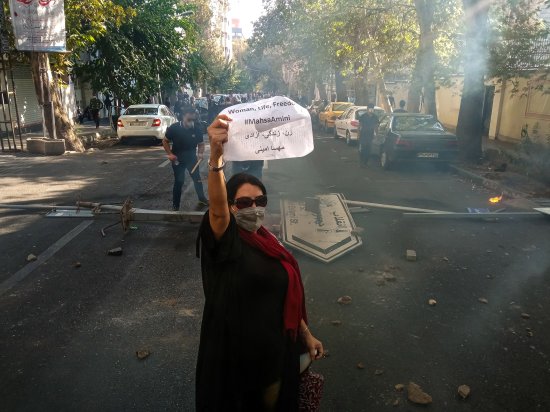
The regime has proved too ruthless to collapse, but thousands of Iranian women defy compulsory hijab rules daily.
The Islamic Republic of Iran has thus far proved too ideologically rigid to reform and too ruthless to collapse. As in the late stages of the Soviet Union, however, the foundations decay in plain sight. Outside their homeland, women of Iranian origin become world-class mathematicians and astronauts; inside Iran, the ruling clerics debate whether women should be allowed to ride bicycles.
One year ago this month, the regime’s “morality police” detained and beat a 22-year-old woman—Mahsa Jina Amini—for allegedly showing too much hair beneath her compulsory veil. Her death in custody triggered Iran’s longest anti-government protests since the 1979 revolution that transformed the country from a U.S.-allied monarchy to an anti-American Islamist theocracy.
[time-brightcove not-tgx=”true”]More From TIME
Supreme Leader Ali Khamenei managed these protests as he always does, by crushing dissent, dividing adversaries, and refusing to offer any concessions. Over 20,000 people were arrested and over 500 killed, including several who were executed. Compromising under pressure, Khamenei believes, only projects weakness and emboldens dissent.
For the U.S., Iran’s internal political dynamics have a direct bearing on national security. Viewed from Washington, Tehran is the world’s leading state sponsor of terrorism, is actively trying to assassinate former U.S. officials (to avenge the 2019 killing of Iranian general Qasem Soleimani), provides Vladimir Putin lethal drones in his war against Ukraine, and has taken more U.S. citizens hostage than any other country in the world. At least five—who have collectively spent two decades as hostages in Tehran’s Evin prison—could soon be returned to the U.S., in return for the U.S. unfreezing at least $6 billion in Iranian assets frozen in South Korea. There should be no illusions this deal will lead to a thaw in U.S.-Iran relations: senior Iranian officials—who publicly advocate hostage trading as an economic policy—have already announced the practice will continue.

A bigger challenge for the Biden Administration heading into election season is an advancing Iran nuclear program that could potentially trigger Israeli military action and skyrocketing oil prices. Five years after the Trump Administration withdrew from the 2015 Iran nuclear agreement signed by the Obama Administration, the CIA assesses that Tehran has the technical capacity to build nuclear weapons and is within weeks of having the fissile material to do so.
Going for a bomb, however, would be a risky move for Khamenei. Iran’s nuclear sites have been thoroughly penetrated by Israel and the U.S., as evidenced by routine acts of sabotage reported at Iranian nuclear facilities and the assassination of top nuclear scientists. Khamenei’s making the decision to weaponize also risks tilting the balance of power toward the Revolutionary Guards, who would likely control the nuclear codes (and aspire to control the country).
Successive U.S. administrations have sought to defuse Iran’s nuclear program, and end the U.S.-Iran cold war, by either trying to engage the Iranian regime diplomatically or subjecting it to economic pressure in the hopes the regime will either capitulate or implode. None of these efforts has borne fruit. “Death to America” remains the Islamic Republic’s enduring slogan.
But another pillar of the revolution is compulsory hijab. And a year after Amini’s death, thousands of Iranian women defy these rules daily, despite the regime’s use of Chinese facial-recognition technology to punish violations of laws of “hijab and chastity.”

The country’s economy is a shambles, and its former Minister of the Environment ominously warned that continued mismanagement of water resources could mean 50 million Iranians—70% of the country—“will have no choice but to leave the country.” Climate scientists say parts of Iran (which this year reached temperatures of 152°F) could be the first places on earth too hot to be inhabited by humans.
After two decades of failure in Iraq and Afghanistan, and the disappointing outcomes of the 2011 Arab uprisings, the U.S. has little confidence that it can positively impact political outcomes in the Middle East. Indeed, absent a cohesive liberal opposition, an implosion of the Islamic Republic is less likely to be followed by an Iranian version of Jeffersonian democracy than by a military government.
For now, it remains a security state commanded by an octogenarian cleric who has held the title of Supreme Leader since 1989, before most Iranians were born. “Everyone is just waiting,” a recent visitor from Tehran told me, “for the leader to die.”
TIME Ideas hosts the world's leading voices, providing commentary on events in news, society, and culture. We welcome outside contributions. Opinions expressed do not necessarily reflect the views of TIME editors.